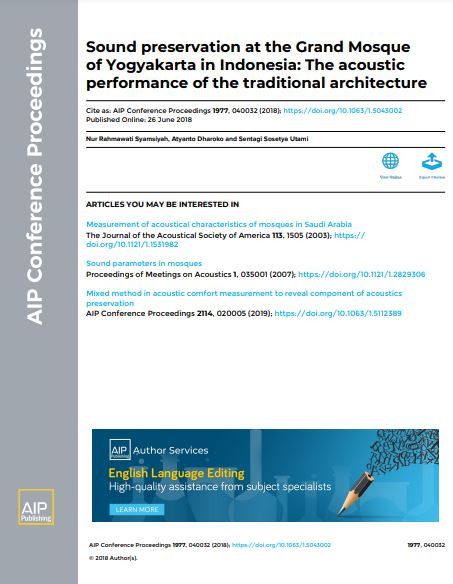
The Grand Mosque of Yogyakarta keeps the originality since it was built in 1773, both in the structure and construction of traditional Javanese architectural style. The study needs to be done to determine the quality of the acoustics in the main room of the mosque. A study on the mosque acoustic parameters was conducted by measurements of impulse response and soundscape. The mosque interior setting and surrounding based on Javanese traditional architecture form a good quality acoustics and audial comfort in sufficient loudness, the clarity of speech, evenly distributed clarity of sound and optimum reverberation time that affects the clarity of the conversation. Background noise can be overcome with the gurgling sound of water in the pond in front of the mosque, that it can bring hearts at ease, so that noises from children screaming and motorcycle passing can be minimized. This particular quality provides a very strong reason to preserve it. The acoustic characteristics are intangible cultural heritage as well as local wisdom. With its quietness and audial comfort, the mosque is highly expected to be a coaching center for a better generation and the mosque can be used as reference for planning the other mosque.
I agree to the terms outlined below:
You agree to upload and assign Mosqpedia Database the rights to use the content worldwide and in perpetuity across all current and future media platforms. Mosqpedia Database may edit, copy, adapt and translate your contribution.
The content will be distributed under the Creative Commons Attribution-Deed – Attribution-NonCommercial-NoDerivatives 4.0 International – Creative Commons
All data will be stored in line with data protection regulations.